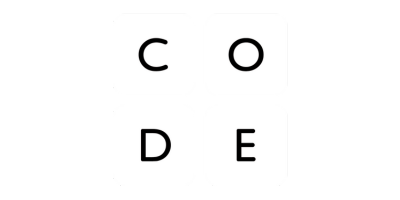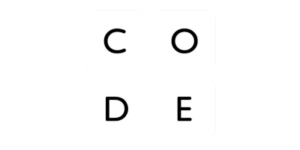
For purposes of this project, we define equity
following Madkins et al. (2020, p.3):
“Working towards equity means supporting minoritized students in:
1) engaging in meaningful and rigorous instruction;
2) grappling with and challenging systemic racism, power, and oppression; and
3) using STEM and CS to empower themselves and their communities.
As such, equity is defined as intentionally facilitating justice-oriented learning experiences for minoritized students. This requires viewing teaching and learning as inseparable from pursuing justice while attending to students’ access to rigorous instruction and equitable outcomes.”
Decision-makers can think systematically about designing CS learning experiences that support all students, including those traditionally marginalized in CS education. They may find tools such as the CAPE Framework (Fletcher & Warner, 2021) helpful, thinking of CS equity in terms of capacity to offer CS, student access to CS, student participation in CS, and student experience in CS. Or, they might use the approach articulated by Santo et al. (2019), which focuses on asking who CS is for, how CS is taught, and what CS is taught. Additionally, the Alliance for Identity-Inclusive Computing Education (AiiCE) delineates tenets for curriculum, pedagogy, professional development, policy, and research that supports increasing the representation, power, and protection of marginalized people in CS (AiiCE, n.d.).
About 15% of students in the U.S. have a disability (National Center for Education Statistics, 2023), and it is unfortunately common to pull out students with disabilities for specialized services during CS instruction (Blaser et al., 2024). It is crucial to design a foundational CS experience that is accessible and appropriate for students with disabilities (Moreno Sandoval et al., 2021). Similarly, especially where CS is a graduation requirement, it is important for schools to ensure that all students have access to the foundational content.
Developing access opportunities for students who enter a school system at a point after the foundational content is taught is crucial. For example, a district that covers some of the foundational content in middle school will need to ensure opportunities for those students who transfer into the district in high school. And while some schools may want to create opportunities for students to learn the foundational content outside of the school day, it is important to ensure that there are alternatives for students who are unable to access out-of-school opportunities (e.g., due to cost, transportation).
While AP CSP significantly overlaps with the foundation (see Section 2.6), it must be supplemented to include all foundational content. Additionally, schools must offer options beyond only AP CS Principles (or IB Computer Science, or other advanced options) as a way to learn the foundation. This is due to both real and perceived challenges with taking AP courses (e.g., belief that one can succeed in a college-level course, breadth content and pace of content, cost of exam).
While pedagogy is beyond the scope of this project, there are some instructional methods that are more welcoming to students traditionally left out of CS education, and schools can ensure that educators have access to professional development that prepares them to teach according to these best practices. For example, research has shown that girls will, on average, find activities that use computing for storytelling more motivating than generic activities (Kelleher et al., 2007). Similarly, educational leaders will need to carefully attend to the climate in their CS courses since the elimination of stereotypically “geeky” elements has been shown to encourage more students to study computing (Cheryan et al., 2015). The foundational content can be taught in ways that are culturally relevant (Ladson‐Billings, 1995), culturally sustaining (Paris, 2012), and culturally responsive (Scott et al., 2015). The framework for Culturally Responsive-Sustaining Computer Science Education (Kapor Center, 2021) from the Kapor Center is a useful resource. In short, classroom activities can be created so that they relate to student interests and life experiences (Madkins et al., 2020).
Note that while equity is not explicitly mentioned in every item in each Topic Area, it is presumed that all topics are to be implemented in an equitable manner and that equitable CS requires a critical approach to CS content. For example, one of the learning outcomes in the Algorithms Topic Area is “AL.2 – Recognize that computational solutions take in information, store and process it, and produce a result.” Part of this recognition includes learning to challenge the common understanding that an algorithm itself cannot be racist (Madkins et al., 2020).
CS teachers identify a lack of support, interest, or knowledge by administrators and counselors as one of the greatest challenges to teaching and promoting equity in CS education (Koshy et al., 2022). Those who schedule courses have a tremendous impact on student participation. For example, misunderstandings lead counselors and administrators to not suggest or recommend CS to students with disabilities (Blaser et al., 2024). It is critical that educators view CS as foundational for all students and support them in pursuing relevant pathways of study.
Choosing names for CS courses has been identified as a promising practice for encouraging students from traditionally underrepresented groups to pursue computing (Arnston, 2016). At the same time, there is often a tension between choosing names that are familiar to most students (e.g., “Game Design”) and choosing names that may be more appealing to students less likely to fit stereotypes about who CS is for (e.g., “Interactive Media”). Regardless of the name chosen, it is important to ensure that courses appeal widely and that all students, teachers, administrators, and counselors understand what the courses offer.
This project is supported by the National Science Foundation (NSF) under Grant No. 2311746. Any opinions, findings, and conclusions or recommendations expressed in this material are those of the author(s) and do not necessarily reflect the views of the NSF.













